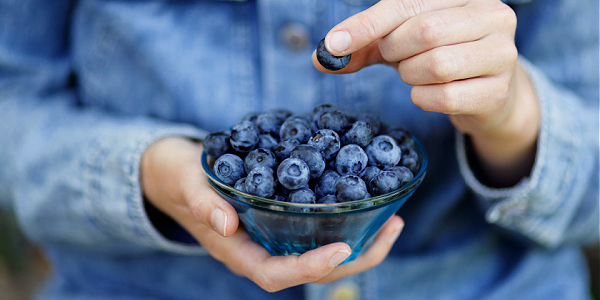
"Heart-healthy," “low fat”, "lowers cholesterol," and "organic" are some common words found on food packages in the grocery aisles that compete for our attention. These concise statements can help aid healthful decisions for quicker and more efficient grocery store runs. However, what exactly are these nutrition claims on food labels and how do you know what is worth paying attention to?
Wondering how to decipher between false nutrition claims and ones you should pay attention to? Here is a breakdown of all you need to know about nutrition and health claims.
What Are Nutrition Claims?
Nutrition claims come from guidelines from the Food and Drug Administration (FDA) that are relate to an amount of a nutrient in a product or related to levels of a nutrient in that food compared to a reference food.
While each nutrition claim has a distinct definition, it can be confusing to what it truly means.
For example, a food product can claim to be fat-free if it contains up to or less than 0.5 grams of fat per serving from the nutrition label. Low-fat claim technically means the food provides 3 grams of fat or less per serving.
If a package of chips is claiming to be reduced fat, according to the FDA, it means it is at least 25% less fat per serving compared to an appropriate reference food like plain potato chips.
Similarly, if a food package says it is “Light,” such as light in sodium, this claim means the sodium is reduced by at least 50% compared to a reference food. For example, a can of soup that is light in sodium should have half the sodium compared to the original can of soup.
Health Claims on Food Labels
According to the FDA, health claims are “claims that have been reviewed by FDA and are allowed on food products or dietary supplements to show that a food or food component may reduce the risk of a disease or a health-related condition.”
In order for something to be an authorized health claim, it needs substantial significant scientific agreement (SSA) that the claim is supported by wide array of scientific evidence for the claim.
There are approved health claims from the FDA that involve specific requirements for the nature of the claim and food involved with a health claim label. Because of the higher level of rules and regulations, health claims can be harder to follow compared to nutrition claims.
8 Common Nutrition and Health Claims on Foods
Some health or nutrition claims may be misleading to portray a food healthier in hopes of increasing people to buy it. Some claims warrant a spot on food packages. Here are the top claims to scoop up and others that could be misleading.
1. Heart Health and Cholesterol
When it comes to heart-healthy foods, packages can claim to "lower cholesterol". Cheerios™ is a prime example of "lowers cholesterol" and was formulated based on fiber content, as adequate fiber intake has been shown to reduce cholesterol.
In 2009, Cheerios™ got a warning from the FDA for misusing a health claim stating, “You can lower your cholesterol 4 percent in 6 weeks.” The FDA found this claim to be misleading and needing context of other important dietary factors.
Currently, Cheerios™ health claim is broadened to state they can help lower cholesterol as part of a healthy diet. The same is true for other oat products, as they provide cholesterol-lowering effects.
2. Sugar-Free
People often use "sugar-free" (and "fat-free") synonymously with "calorie-free" and equating these foods and drinks as healthy. This claim is particularly attractive for individuals monitoring blood sugar levels and those trying to lose weight.
However, sugar substitutes and alternative sweeteners replace sugar in such products. These sugar alternatives can create unpleasant gastrointestinal distress, especially in large amounts.
Also, remember sugar-free can technically mean up to 0.5 grams of sugar per serving. Eating or drinking multiple “sugar-free” products could still provide a source of sugar in the diet if eaten in excess.
3. Made with Whole Grains
Choosing "whole grains" and "wheat" over white, refined products has been a simple recommendation to increase nutritional value. Although these products can be quite nutritious, it is important to stay cautious over added unwanted ingredients.
For instance, a "whole grain" pancake may still contain sugar much like its traditional counterpart.
Don’t assume a food made with whole grains equates it as healthy or even high in fiber. Check the ingredient list to see if whole grains are one of the first ingredients. Likewise, check the fiber amount on the nutrition label. If whole grains are not the main ingredient, they probably won’t be high in fiber.
4. Made with Real Fruit
Although fruit juice may seem like a better choice than sugary soft drinks, juices can still contain the same amount of sugar. Even if the package claims "made with real fruit," it does not dismiss other ingredients added (as stated above describing "made with whole grains").
In addition, the amount of real fruit added can substantially vary. Trace amounts of real fruit juice still contribute to the notion of "made with real fruit."
5. Support Immune Health
Food products and supplements with potential immune health benefits have drastically increased in popularity. However, according to the FDA, health claims to “support” or help “maintain” the immune system are considered acceptable.
Any claims on supplements or food packages claiming to be a cure or offer protection from certain illnesses are not allowed. Using the verbs boost, protect, or build in reference to immune health is not authorized.
It is important to remember with immune health, the totality of diet and lifestyle - not just a single product - generally has the upper hand on immune strength.
6. All Natural
Defining food as "natural" can be complicated, especially from a scientific standpoint. From a consumer's perspective, "all-natural" products are assumed to be minimally processed and absent of any food additives. These foods are generally free from antibiotics, added sweeteners, and food colorings and flavorings.
Remember, a "natural" packaged product should not take the place of fresh fruits and vegetables from the produce section.
7. Organic
"All-natural" and "organic" are often used interchangeably. However, organic crops earn the "USDA Organic" label following established regulations regarding food growth, handling, and processing.
Farmers utilize organic practices such as natural fertilizers and crop rotation. Though the organic seal is voluntary, most producers choose to utilize its availability and offering.
As with other health claims, organic food does not in itself mean the food is automatically “good” for you.
8. Cholesterol-Free
Any food made from plants is going to be cholesterol-free. Sometimes snacks like chips or cookies can have a cholesterol-free nutrition claim to make them appear as a healthy food alternative.
Overall, just because something is labeled as cholesterol-free does not mean it is necessarily good for you or can be eaten in large quantities.
Health and Nutrition Claims Recap
Nutrition and health claims are regulated by the FDA. They can be used by food companies to try to grab consumers’ attention to buy the product or provide quick nutrition-related information. However, these claims, in some instances, could be misleading.
Anything labeled “free” of fat or sugar could still provide up to 0.5 grams per serving. Foods may have labels stating they are made with real fruit, whole grains, all-natural, or organic. While these can be important to know as consumers, it does not automatically mean these foods with these labels are the healthiest choice.
A general rule of thumb is to always look at the ingredient label and nutrition facts for a food to get a true look at the health effects of a food or drink.
References:
Center for Food Safety and Applied Nutrition. Authorized health claims that meet significant scientific agreement. U.S. Food and Drug Administration. Published March 7, 2022. https://www.fda.gov/food/food-labeling-nutrition/authorized-health-claims-meet-significant-scientific-agreement-ssa-standard.
FDA sinks Cheerios Health claims; calls cereal an 'unapproved drug'. Product Reviews and Ratings - Consumer Reports. Published May 13, 2009. https://www.consumerreports.org/cro/news/2009/05/fda-sinks-cheerios-health-claims-calls-cereal-an-unapproved-drug/index.htm.
Front-of-Package Nutrition Rating Systems and Symbols: Phase I Report. National Center for Biotechnology Information. https://www.ncbi.nlm.nih.gov/books/NBK209851/.
LabelCalc.com. Nutrient content claim vs health claim. LabelCalc. Published December 30, 2021. https://labelcalc.com/nutrient-content-claim-vs-health-claim-whats-the-difference/.







